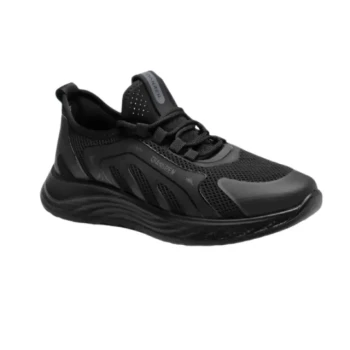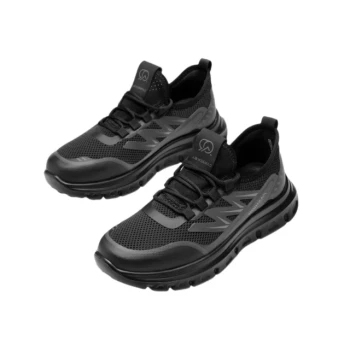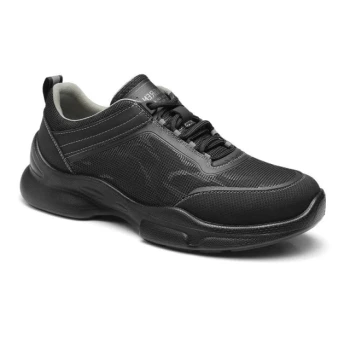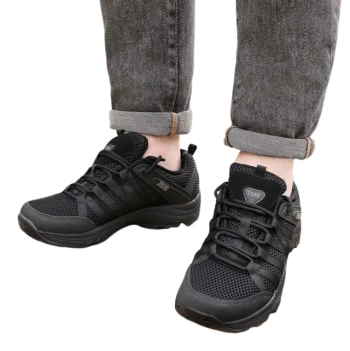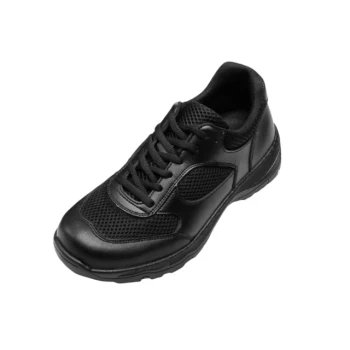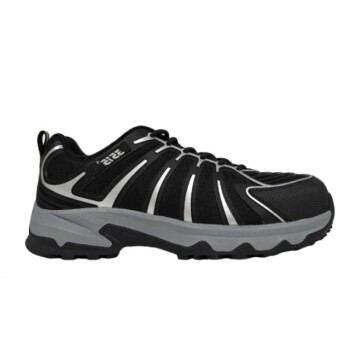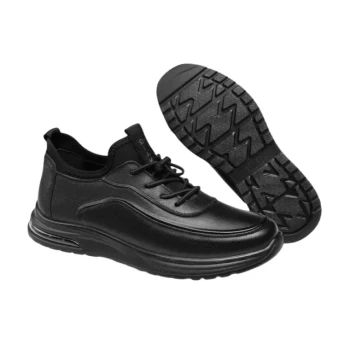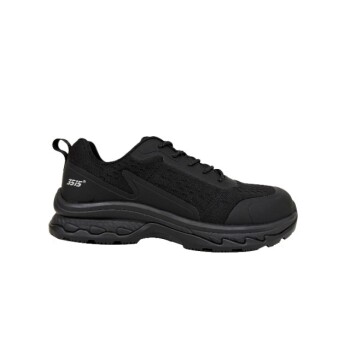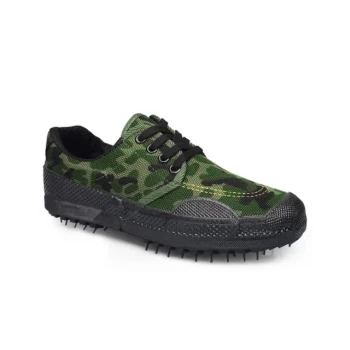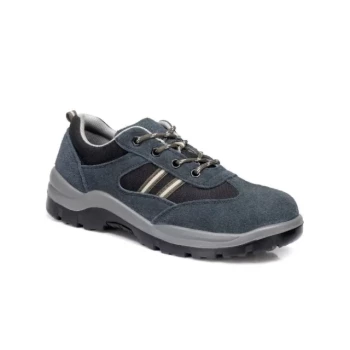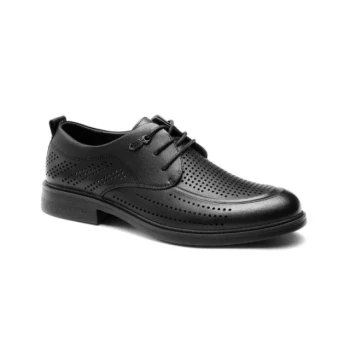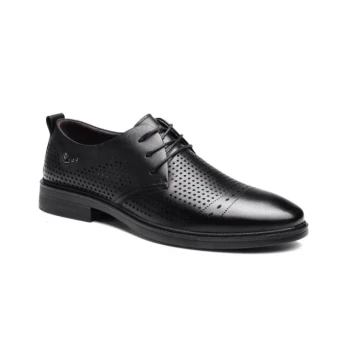Lightweight shoes improve breathability not because of weight itself, but because the advanced materials used to achieve that low weight—primarily synthetic mesh—are inherently porous. This open-weave structure allows heat and moisture vapor from your foot to escape far more effectively than traditional, heavier materials like leather.
The connection between low weight and high breathability is a matter of material engineering. The quest for lighter footwear led to the adoption of synthetic fabrics with a porous structure, making ventilation a natural and beneficial byproduct of modern shoe design.
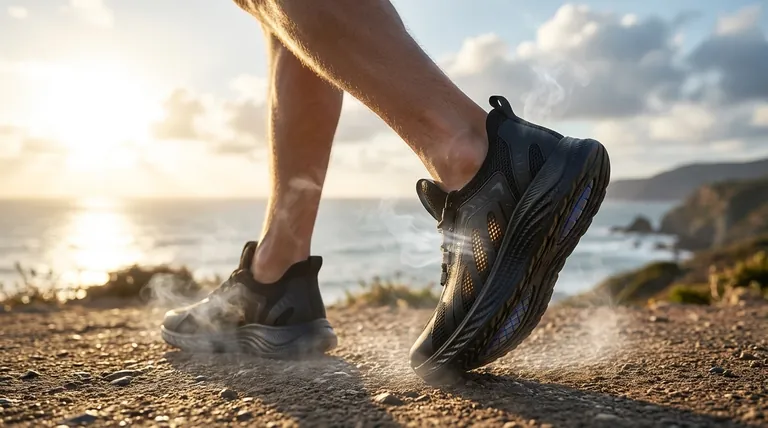
The Science of Breathable Footwear
To understand why lightweight shoes excel at breathability, we must look at the materials and principles of air exchange. The benefit is not an accident; it's a direct result of specific design choices.
Synthetic Mesh: The Foundation of Breathability
The primary material in most lightweight athletic and casual shoes is synthetic mesh.
Unlike a solid, dense material like leather, mesh is an engineered fabric with a web-like structure. This design creates thousands of microscopic pores.
These pores are the key, serving as natural pathways for air to circulate freely around the foot. This structure is fundamentally light and open by design.
How Air Exchange Cools Your Feet
Your feet are one of the highest sweat-producing areas of your body, creating a warm, humid microclimate inside your shoe.
Breathability is the technical term for a material's ability to allow this moisture vapor to pass through it and escape.
The pores in lightweight mesh allow the high-pressure, hot, moist air inside the shoe to be pushed out, while lower-pressure, cooler, drier air from the outside can enter. This creates a constant, passive cooling cycle.
Understanding the Trade-offs
While breathability is a significant advantage of lightweight shoes, it is part of a larger equation of performance. Selecting the right shoe requires understanding the inherent compromises.
The Waterproof vs. Breathable Dilemma
Some shoes feature a waterproof-breathable membrane. These are engineered to block liquid water (like rain) while allowing water vapor (sweat) to escape.
However, it is critical to understand that these membranes are a compromise. They are always less breathable than an open-mesh upper.
You gain protection from external moisture at the direct cost of maximum airflow and heat dissipation.
Durability and Support vs. Airflow
The lightest, most breathable mesh fabrics are often less resistant to abrasion and provide less structural support for the foot.
Heavier materials, such as leather or thick synthetic overlays, increase a shoe's durability and stability. This added protection and structure inherently traps more heat and moisture.
Making the Right Choice for Your Goal
Choosing the right shoe means aligning its material properties with your intended activity. Use a shoe's weight and visible materials as clues to its performance characteristics.
- If your primary focus is maximum ventilation: Seek shoes with expansive, open-weave mesh uppers and minimal structural overlays, ideal for hot-weather runs or intense gym workouts.
- If your primary focus is all-weather versatility: Opt for a shoe with a waterproof-breathable membrane, accepting the reduction in airflow as a necessary trade-off for protection against wet conditions.
- If your primary focus is durability and support: Choose shoes built with leather or reinforced synthetics, knowing that reduced breathability is the price for robust protection and longevity.
By understanding that a shoe's weight is an indicator of its material composition, you can confidently select footwear that truly serves your purpose.
Summary Table:
| Feature | Benefit |
|---|---|
| Synthetic Mesh Upper | Creates thousands of pores for optimal air circulation |
| Lightweight Construction | Reduces overall foot fatigue while enhancing ventilation |
| Passive Cooling Cycle | Expels hot, moist air and draws in cool, dry air |
| Activity-Specific Design | Balances breathability with durability or waterproofing as needed |
Ready to manufacture high-performance, breathable footwear? As a large-scale manufacturer, 3515 produces a comprehensive range of shoes and boots for distributors, brand owners, and bulk clients. Our expertise in advanced materials like synthetic mesh ensures your products deliver superior comfort and airflow. Let's discuss your next order — contact our team today to get started!
Visual Guide
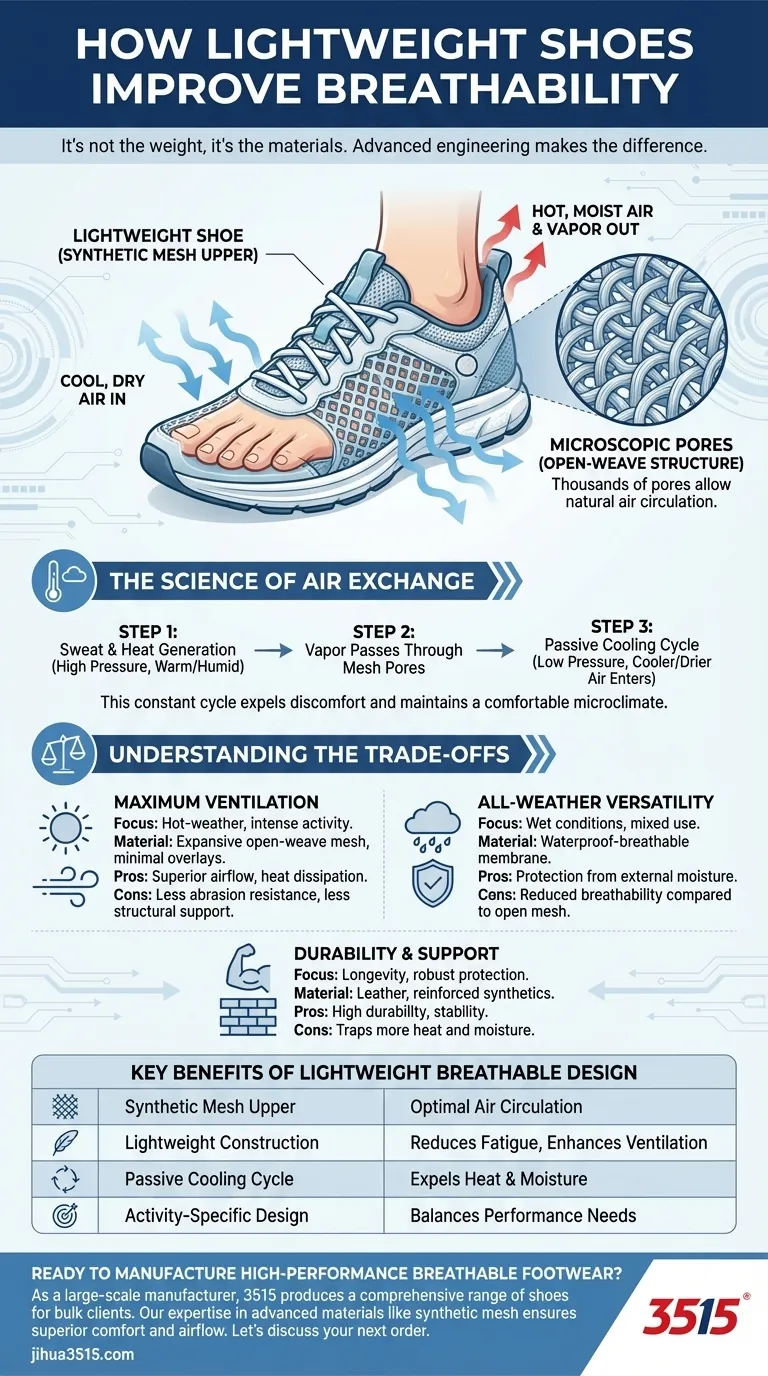
Related Products
- Wholesale Breathable & Cushioned Training Shoes Custom Factory Production
- Wholesale Lightweight Cushioned Athletic Sneakers for Custom Bulk Production
- Wholesale Breathable Training Shoes Custom Athletic Footwear Manufacturer
- Lightweight Breathable Training Shoes for Wholesale & Custom OEM Manufacturing
- Wholesale Durable & Breathable Training Shoes for Custom Brands
People Also Ask
- Does exercising with a friend or partner enhance safety? Unlock the 'Buddy System' Benefits
- What are the features of non-slip athletic sneakers? The Ultimate Guide to Traction & Performance
- How does flexibility differ between running and walking shoes? A Guide to Choosing the Right Footwear
- Does more ground contact area mean better support? Unlock the Secrets of Stable Footwear
- Are non-slip shoes affordable? Yes, and Here’s How to Get the Best Value
